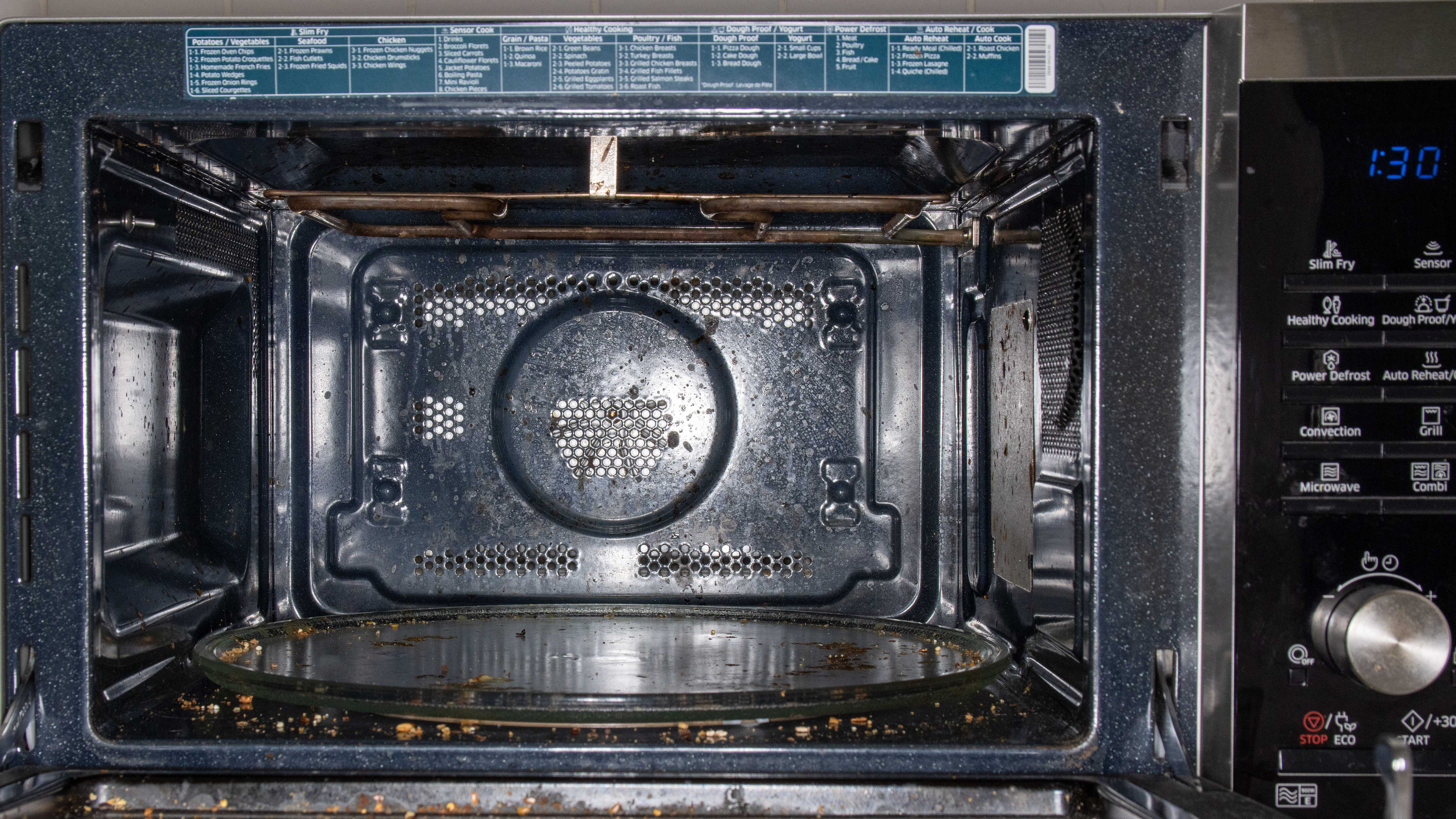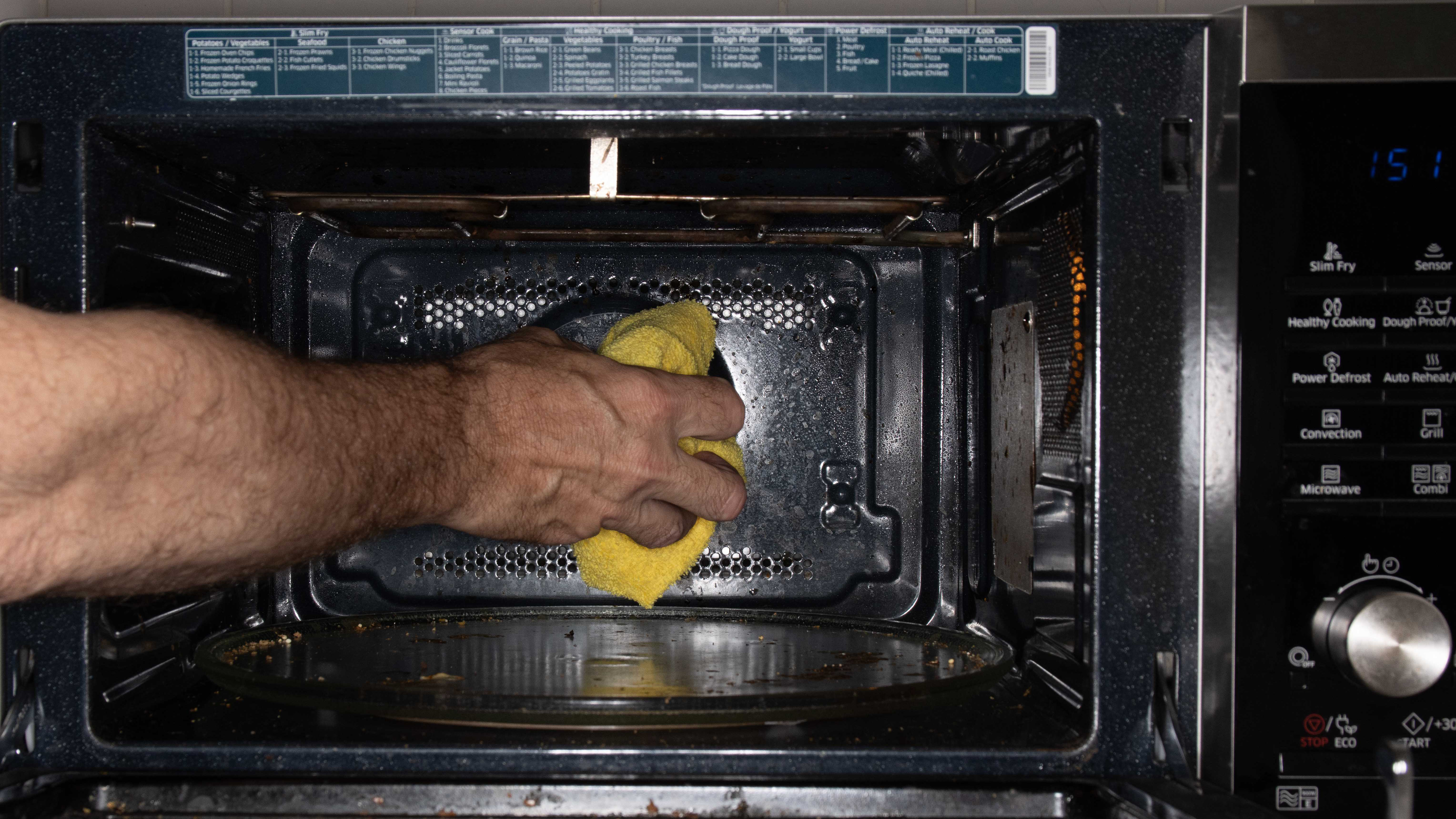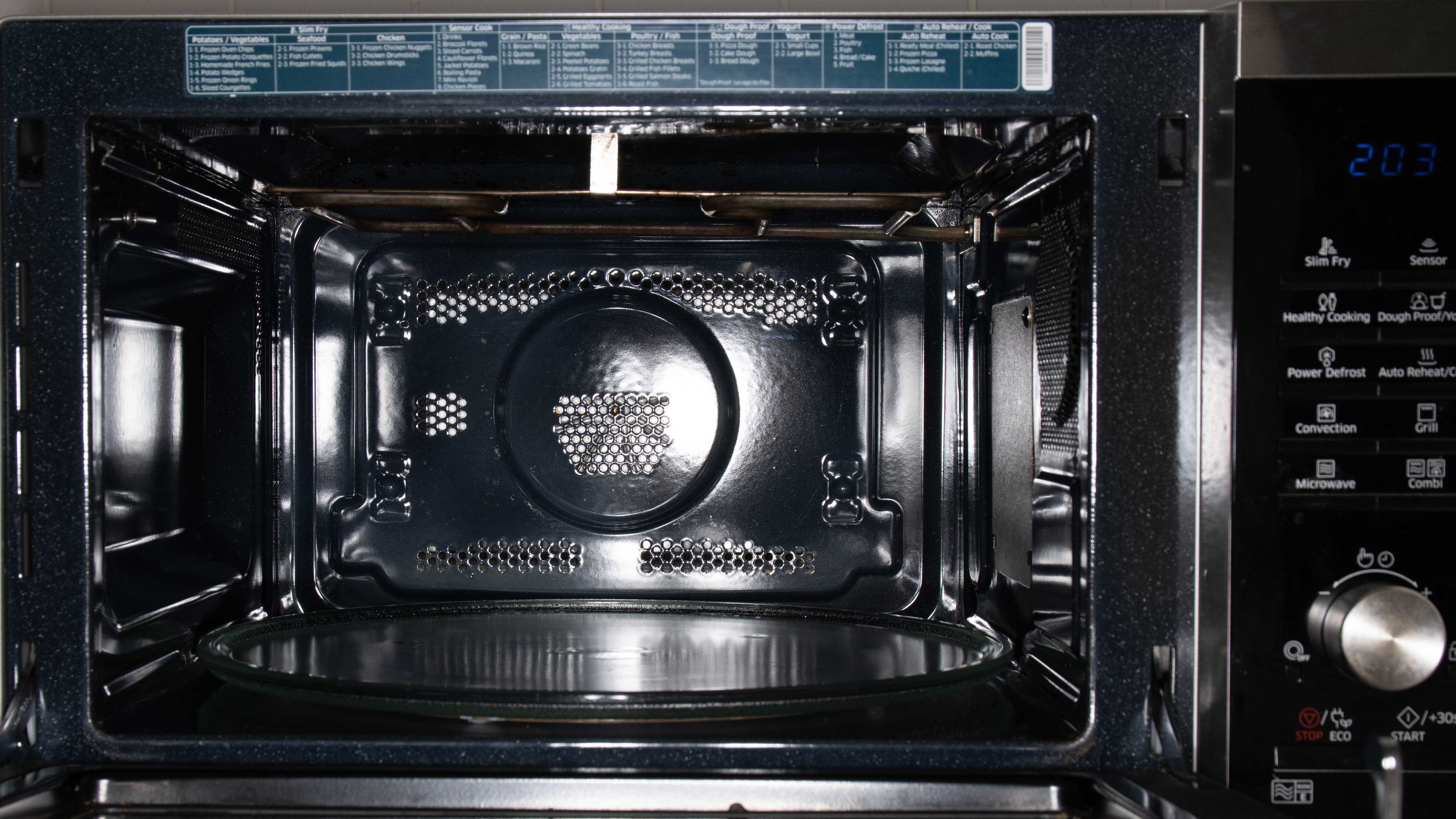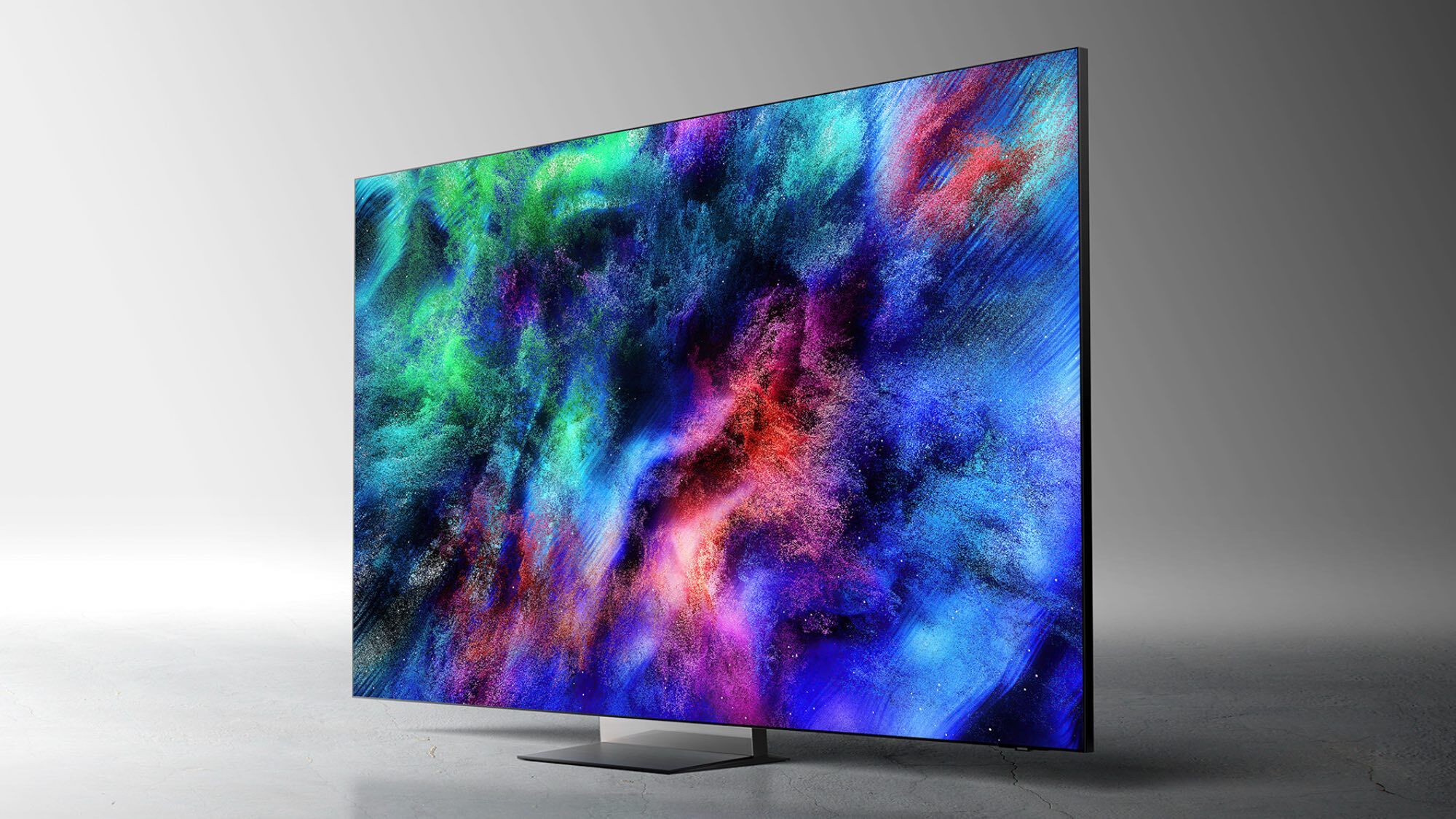How to clean a microwave
Here's how to clean a microwave using a few fuss-free methods.

How often do we clean our microwaves? While it might seen a bit intimidating working out how to clean a microwave, it’s surprising how few of us clean it regularly. Considering nearly every kitchen has one, we tend to use some more often than the oven itself. Despite this, even the best microwaves can be left to harbor grease and food residue for weeks. It’s only when the smell finally defeats us that we reluctantly pick up the sponge and try to shift those stubborn stains.
Regular cleaning is important though; over time bacteria will build up in a dirty microwave and can potentially contaminate new dishes of food. Not only is it more hygienic to keep the microwave clean, but regular cleaning will make the job easier. So, here are some quick and easy ways to clean your microwave so it looks brand new again.
You can check out these 9 things you didn't know you could clean with a lemon and the the best microwaves right now. Bear in mind, these are 11 things you should never put in a microwave to prevent an accident.
Cleaning the microwave need not be such a chore though; in fact, it can be pretty easy. So follow these steps and tips on how to clean a microwave to get the faithful kitchen aide looking like new again.
How to clean a microwave
Cleaning a microwave is really simple, but it is something you should do regularly.
How regularly? Well, if you use your microwave daily, then you should be checking it on a daily basis. If any fresh food has splattered or dripped, be sure to clean it up as soon as you can. If left, it will burn on and only become harder to remove.
- 1 lemon or lime or orange OR white distilled vinegar
- Microwave-safe bowl
- Wooden toothpick or cocktail stick
- Microfiber cloth
- Baking soda
If you regularly use the microwave, it’s good practice to deep clean it once a month as well using the below methods. Tell-tale signs that your microwave needs a deep clean include food residue building up inside, a greasy window or a smell whenever you open the door.
Get instant access to breaking news, the hottest reviews, great deals and helpful tips.
How do I use the self-clean function?
Some premium microwaves actually come with a self-clean setting. If yours does, simply follow the manufacturer’s recommendations on how to use and how often. These typically involve a very similar method to the below where the microwave will heat a bowl of water to steam clean itself.
How to clean a microwave with lemons

1. If you’ve opted to clean your microwave with citrus fruit, simply fill a microwave-safe bowl with cold water. Depending on the size of your microwave you can use ½ to 1 cup of water, although don’t fill the bowl more than half-full.
Slice your lemon, orange or lime in half and squeeze the juice from both halves into the water. Leave the rinds floating in the bowl and place in the center of the turntable. To prevent over-boiling, you can also add a wooden toothpick or cocktail stick to the water. This will absorb any excess heat.
2. Set your microwave to high power and heat for 3 minutes, or until you notice that the water has started to boil and the microwave is filled with steam.
3. Don’t open the door immediately. Instead, leave the steam to work its magic for 5 minutes. Once time is up, carefully remove the bowl of water and use a damp microfiber cloth to wipe away the grease and grime.
How to clean a microwave with vinegar

1. This method is similar to the above. Fill a microwave-safe bowl with the same measurement of water as for lemons, but add 1 tablespoon of white distilled vinegar per cup of water. You can add a wooden toothpick or cocktail stick to the water as well to prevent it from boiling over. The bowl can then be placed in the microwave.
2. The microwave will need to run on its highest setting for 3 minutes or until it’s filled with steam.
3. Leave it to stand for 5 minutes before you open the door. Once open, you can carefully remove the bowl and wipe down the walls, door and base with a damp microfiber cloth.
Final touches

If some grease still remains after either of these methods, then baking soda can help shift it. First, unplug the microwave, then mix up a paste with ½ cup of baking soda and 2 tablespoons of water and apply directly to the greasy spots, being careful not to let the solution get into the vents. Then simply remove with hot water and a microfiber cloth.
If the turntable has some particularly tough residue burnt on, most can be run through the dishwasher, although check that it is dishwasher-safe in the manual first. To clean the exterior, you can use a little dish soap with water to shift any fingerprints and for the door, you can dilute the vinegar with water to act as a glass cleaner.
You should now have a much cleaner microwave! Remember to regularly inspect it to prevent any grease or smells from building up in the future.
How to get a bad smell out of the microwave
If you’re struggling to shift a bad smell from a microwave, such as burnt popcorn or fish, then place a small bowl of baking soda in the center. Shut the door and leave it to sit overnight to absorb the smell. Leave the microwave door open afterwards to air.
Tips to keep your microwave clean
- Wipe any spills immediately
- Cover any food which may boil and splatter
- Leave the door open to air after you microwave anything smelly
- Microwave your food in shorter time increments, you can also stir it more regularly if it’s prone to explode
- Here's how to wash a pillow
- Check out how to clean your washing machine
- This TikTok oven cleaning method has gone viral
- How to clean a gas stove top to make it look spotless.
Next: Check out the 9 microwave mistakes you never knew you were making.

Katie Mortram used to be a Homes Editor for Tom's Guide, where she oversaw everything from kitchen appliances to gardening tools, as well as smart home tech. Specializing in providing expert advice for cleaning and home manintenance, she now works as Household Advice Editor for Good Housekeeping.
